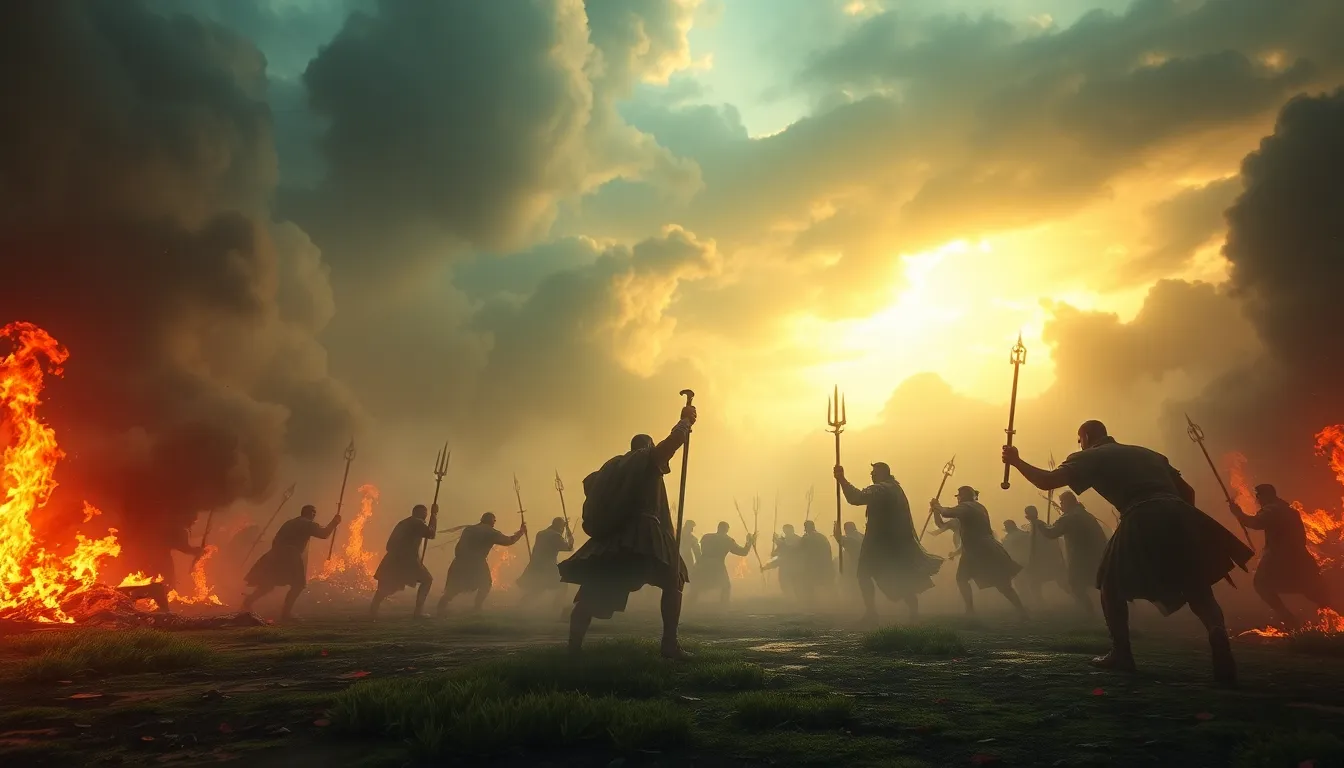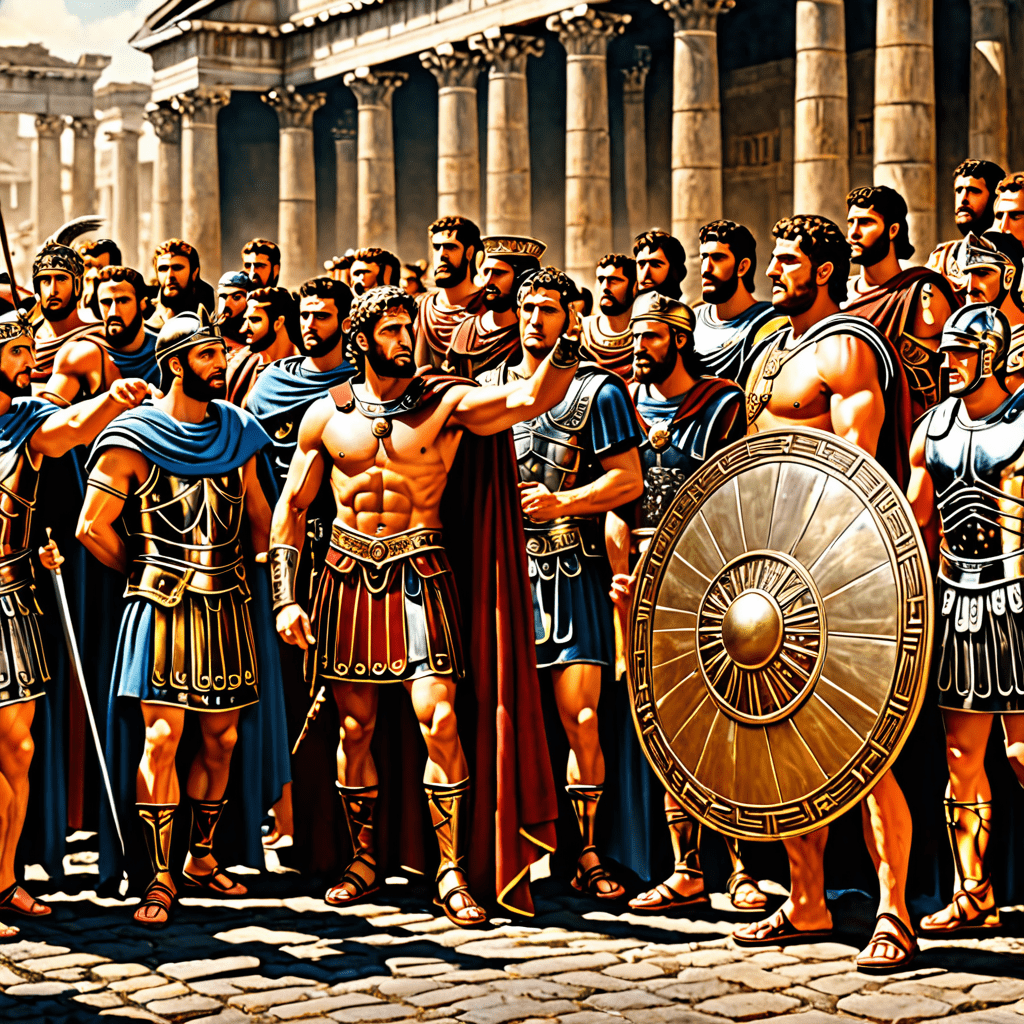The Legendary Battlefield: Epic Mythological Showdowns
Introduction to Mythological Battlefields
Mythological battlefields are the grand arenas where gods, heroes, and monsters clash, shaping the narratives and moral lessons of the cultures that create them. These legendary confrontations are not merely tales of victory and defeat; they serve as allegories for the struggles of humanity, exploring themes of honor, fate, and the cosmic order. This article delves into some of the most epic showdowns in mythology, illustrating their significance and the heroic figures that inhabit these legendary tales.
The Role of Gods and Heroes in Mythology
Gods and heroes are central figures in mythological narratives, representing the ideals, fears, and aspirations of different cultures. They embody qualities such as bravery, wisdom, and strength, often serving as intermediaries between the divine and the mortal realms. In epic battles, these figures play crucial roles, influencing outcomes and exemplifying moral dilemmas faced by humanity.
Some notable gods and heroes from various mythologies include:
- Zeus (Greek): The king of the gods, associated with thunder and justice.
- Thor (Norse): The god of thunder, known for his strength and protection of mankind.
- Achilles (Greek): A legendary warrior known for his invincibility and tragic fate.
- Krishna (Hindu): An avatar of Vishnu, revered for his wisdom and guidance in battle.
Famous Mythological Showdowns: An Overview
Throughout history, numerous iconic battles have emerged in mythological texts, each with its own unique characters and narratives. These epic confrontations impact the mythology of their respective cultures, influencing storytelling and moral teachings. Some of the key battles to be explored include:
- The Trojan War
- Ragnarok
- The Battle of Kurukshetra
- The Epic of Gilgamesh
- The Battles of the Tuatha Dé Danann
The Trojan War: A Clash of Titans
The Trojan War is one of the most significant events in Greek mythology, depicting a decade-long conflict sparked by love, betrayal, and the whims of the gods. Central figures in this war include:
- Achilles: The greatest warrior, known for his rage and eventual downfall.
- Hector: The noble prince of Troy, recognized for his bravery in defending his city.
- The Gods: Including Zeus, Hera, and Athena, who intervene in human affairs and influence the war’s outcome.
The war is characterized by strategic battles, such as the ambush of the Trojan forces and the cunning use of the Trojan Horse, ultimately leading to the fall of Troy and the tragic fates of its heroes.
Ragnarok: The Norse Apocalypse
Ragnarok signifies the end of the world in Norse mythology—a cataclysmic battle between the gods and their adversaries, the giants. Key characters include:
- Odin: The Allfather, who leads the gods into battle against overwhelming odds.
- Thor: The hammer-wielding god who faces the serpent Jörmungandr.
- Loki: The trickster god who betrays the gods, ultimately fighting against them.
This battle not only marks the destruction of the cosmos but also paves the way for rebirth and renewal, reflecting themes of cyclical time and the inevitability of change.
The Battle of Kurukshetra: A Moral Dilemma
The Battle of Kurukshetra, central to the Indian epic Mahabharata, is a profound exploration of duty, righteousness, and the human condition. Key figures in this epic confrontation include:
- Arjuna: A warrior prince who grapples with his moral dilemmas on the battlefield.
- Krishna: Arjuna’s charioteer and divine guide, who imparts the Bhagavad Gita’s teachings.
- The Pandavas and Kauravas: Two factions of a royal family, embroiled in a fierce struggle for power.
This battle raises significant philosophical questions about dharma (duty) and the nature of justice, making it a timeless narrative of human conflict.
The Epic of Gilgamesh: Friendship and Conflict
The Epic of Gilgamesh is one of the oldest known literary works, depicting the adventures of Gilgamesh, a king who seeks immortality. Central to the narrative is the friendship between Gilgamesh and Enkidu, who together confront formidable foes such as the monster Humbaba and the Bull of Heaven.
Their battles highlight themes of companionship, loss, and the quest for meaning in life, ultimately leading Gilgamesh to understand the value of human experiences over the pursuit of eternal life.
Celtic Mythology: The Battles of the Tuatha Dé Danann
The Tuatha Dé Danann are a race of deities in Irish mythology known for their magical powers and epic confrontations. One of the most notable conflicts is the Second Battle of Mag Tuired, where the Tuatha Dé Danann face off against the Fomorians, a race of giants and supernatural beings.
These battles explore themes of power, sovereignty, and the complex relationships between the mortal and divine realms, showcasing the rich tapestry of Celtic mythological narratives.
Comparative Analysis of Mythological Battles
Across different cultures, mythological battles share common themes that resonate with humanity’s collective consciousness. Some of these include:
- Fate and Destiny: Many battles are influenced by prophesies and predetermined outcomes.
- Divine Intervention: Gods frequently intervene in battles, highlighting the relationship between mortals and the divine.
- Cultural Identity: These epic confrontations often reflect the values, fears, and aspirations of the societies that create them.
Such themes reveal not only the nature of heroism and conflict but also the moral lessons that societies pass down through generations.
Conclusion: The Legacy of Epic Showdowns in Modern Culture
The legendary battlefields of mythology continue to influence contemporary storytelling in literature, film, and art. The themes of heroism, sacrifice, and the struggle between good and evil resonate with modern audiences, ensuring that these ancient narratives remain relevant. As we explore these epic showdowns, we find that they not only reflect the cultural heritage of their time but also offer timeless insights into the human experience, shaping our understanding of conflict and resolution in the world today.



